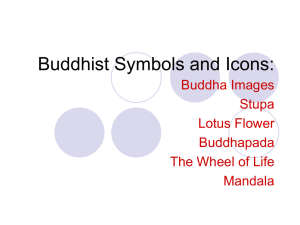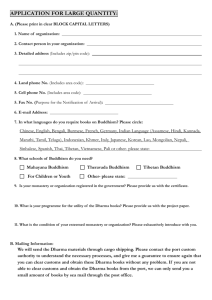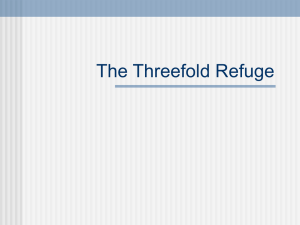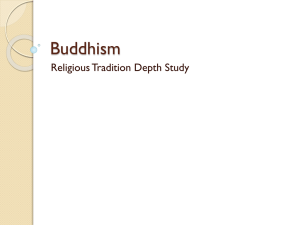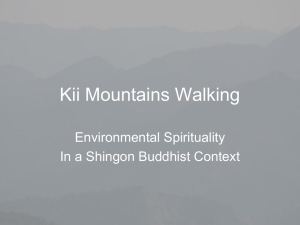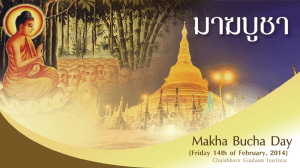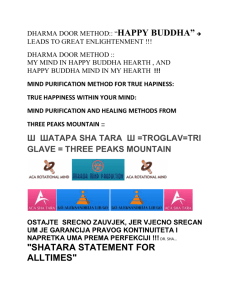RELATIVE CLAUSE
advertisement
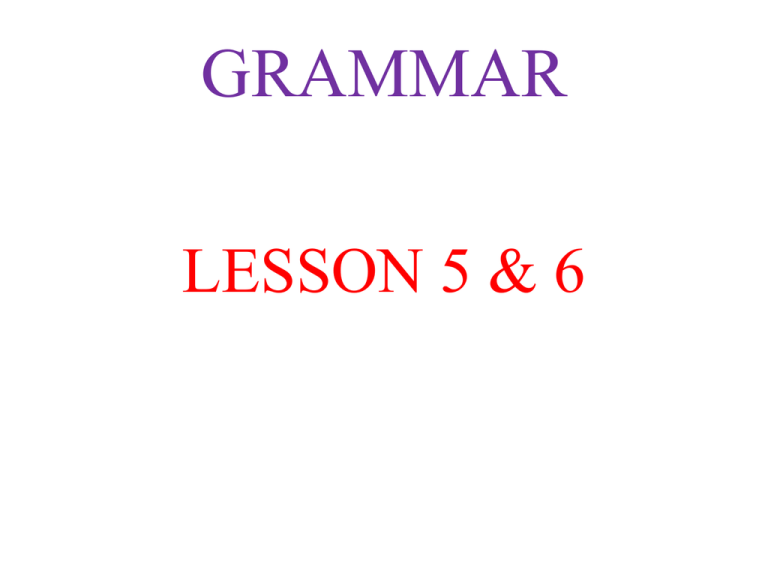
GRAMMAR LESSON 5 & 6 Relative clause gives us more information about the person, animal or thing we talk about. RELATIVE CLAUSE Relative pronouns Subject Object Person who/that whom/that Animal/thing which/ that which/that Possession whose whose Usage 1/ For Person : The one sees Dependent Arising. He sees the Dharma. → The one who/ that sees Dependent Arising sees the Dharma. He saw beings. Some are easy to teach and hard to teach. → He saw beings who / that are easy to teach and hard to teach. The Konandas were the Buddha’s old companions. The Buddha was preaching Dharma to them → The Konandas whom/ that the Buddha was preaching Dharma to were his old companions. 2/ Things : • Some lotuses are born in the water. They are unstained by it. → Some lotuses which/ that are born in the water are unstained by it. • The Dharma is profound. The Buddha has realised it. → The Dharma which/ that the Buddha has realised is profound. 3/ Possession : • The lady has a beautiful smile. She is Princess Yasodhara. → The lady whose smile is beautiful is Princess Yasodhara. • The bird is sitting in the tree. Its wings are hurt. → The bird whose wings are hurt is sitting in the tree. 4/ Use “that” in these cases : ( những trường hợp dùng “that”) • Superlative comparison ( so sánh nhất) He’s the most intelligent one that I admire a lot. • After “only, the first, the last” The Noble Eight-fold Path is the only way that leads one to true happiness. • After “ no one, nobody, nothing, anyone, anything, anybody, someone, something, somebody, all, some, any, little, none” There is something mysterious here that I have to explore. • Mixed antecedent ( danh từ bao gồm cả người lẫn vật): She talked about the people and places that she had visited. Defining relative clause • We use defining relative clause to give essential information about the animal, person or thing we are talking about. Without the information in a defining relative clause, the sentence would not make sense. We do not use comma in this type of clause. E.g : He’s the man who asked the Buddha to accept him in His order. In defining relative clause we can use “that” instead of “who and which”. E.g : This is a subject that (which) is hard to see. There are those that (who) will understand the Dharma. We can omit “whom, which, that” when they are the objects : E.g : They are the lotus plants which I like very much. → They are the lotus plants I like very much. People whom he sees are of various kinds. → People he sees are of various kinds. Non-defining relative clause • We use non-defining relative clause to give extra information about the person, animal or thing we are talking about. This information is not essential to the meaning of the sentence. Non-defining relative clauses are seperated from the main sentence by commas. E.g : Brahma Sahampati, who feared that the world might be destroyed without hearing the Dharma, approached and requested the Buddha to preach the Dharma. • We can not use “that” in non-defining relative clause. E.g : The Middle Path, which leads to calm, wisdom, enlightenment, Nibbana, has been comprehended by Tathagata. • We cannot omit relative pronoun in non-defining relative clause. E.g. : Angulimala, whom the Exalted One preached the Dharma to, is a bloodthirsty robber. COMPARE BETWEEN DEFINING AND NON- DEFINING RELATIVE CLAUSE DEFINING NON-DEFINING •Give essential information •Give extra information He’s the man who asked the Buddha to accept him in His order. •Without comma The Konnadas, who admired the Buddha, asked the Buddha to accept them in His order. •With comma DEFINING NON-DEFINING •Can use that instead of who and which. This is a subject that (which) is hard to see. •Can not use “that” The Middle Path, which leads to calm, wisdom, enlightenment, Nibbana, has been comprehended by Tathagata. •Can omit “whom, which, that” when they are the objects They are the lotus plants I like very much •Cannot omit relative pronoun The white lotus in this pond, which I like very much, is rising well out of the water. Other relative pronouns What : to mention a thing E.g : I don’t know what he said. Where : to mention a place E.g : Deer Park is the place where the Buddha gave his first discourse entitled “ The Turning of the Dharma Wheel”. When : to mention a point of time. E.g. : The full moon day of Vesak is the day when Prince Siddhartha was born. Why : to mention a reason E.g : That’s the reason why the prince decided to leave the kingdom and renounce the world. Practice 1. A bird ………….. has only one wing can never experience the joy of soaring. 2. True religion, ………….. makes a person light-hearted and joyful all the time, means living the best and highest life, getting the most of our life. 3. This is the sort of religion ………………the Buddha taught. 4. The Buddha, …………….teaches his followers to do good, is a great teacher. 5. The Buddha ………………teachings given to men over 2500 years are still helpful to us today was the wisest teacher the world has ever seen. 6. The Buddha is the greatest Father of human beings …………………… I‘ve ever known. 7. Many of our brothers and sisters in the West are taking refuge in the Great Master ……………….. has guided the East for so many centuries. 8. The Sakyas, ………….lived on the foothills of the Himalaya in modern Nepal, were a proud clan of the Khattiyas. 9. They were ruled by a wise and powerful king called Suddhodana, …………..founded his capital at Kapilavatthu. 10. Queen Maya, ……………king Suddhodana got married to, was a daughter of the Kolyas. 11. Lumbini Park is the place…………the Queen gave birth to a prince. 12. The wise hermit Asita, …………….the price invited to the palace on the naming ceremony, said that two ways would open before the prince. 13.The baby was named Siddhartha - “ the One ………….. wish is fulfilled”. 14.The day …………….the prince was born is called the Full Moon Day of Vesak. 15. I don’t know ………….beings are still attached to worldly pleasures although they know it will bring them grief sooner or later.



